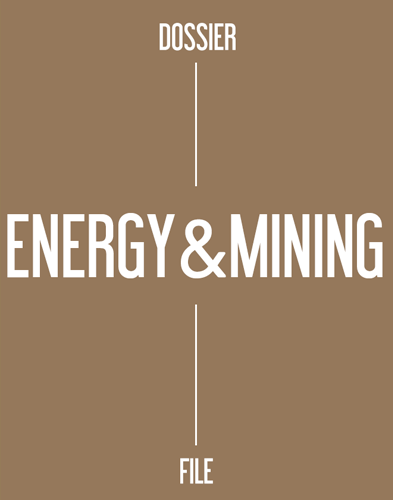The last ten years have seen offshore construction risks being underwritten based upon one standard market wording, the WELCAR 2001 policy form

During the 1990s a number of issues impacted adversely on the offshore construction underwriting markets. Underwriters experienced significant claims having provided defective part cover, for high technology equipment, irrespective of any physical damage.
Loss records were compounded by the significant cost of conducting repairs offshore. These issues, in addition to blanket subrogation waivers against contractors and a soft rating cycle, took a heavy toll on underwriters.
Loss records were compounded by the significant cost of conducting repairs offshore. These issues, in addition to blanket subrogation waivers against contractors and a soft rating cycle, took a heavy toll on underwriters.
The last ten years have seen offshore construction risks being underwritten based upon one standard market wording, the WELCAR 2001 policy form.
This policy form has mainly been driven by Lloyd’s underwriters and has undoubtedly brought stability to the Offshore Construction sector of the market.
This policy form has mainly been driven by Lloyd’s underwriters and has undoubtedly brought stability to the Offshore Construction sector of the market.
However, policyholders have remained concerned by various restrictions to coverage imposed by this standard market form. Furthermore, certain sections of the policy form require careful clarification in order to avoid contentious debate in the event of a claim.
Physical Damage Cover & Defective Parts
The WECLAR 2001 policy form responds to the reasonable cost of repairing and replacing project property following physical loss and damage, during the policy period, caused by all risks from external forces.
The standard WELCAR 2001 policy form will not respond to the cost of repairing and replacing parts which are damaged or defective due to an inherent internal fault with the part itself. For example, there may be a fault with the material from which the part is made or a fault with the design of the part itself. Historically, underwriters automatically provided such coverage without imposing any sub-limits or additional deductible provisions.
However, the standard wording will respond to the reasonable cost of repairing damage to surrounding insured project property caused by a part containing an inherent internal fault. For example, a valve intended to vent pressure may be defective and fail to open, causing a build up of pressure within pipe work connected to machinery, resulting in damage to the machinery.
Subject to an additional premium, the option exists to purchase the Defective Part Exclusion buyback endorsement to the standard WELCAR 2001 policy form. This endorsement provides cover for the cost of repairing or replacing parts containing an inherent internal defect, providing such defect manifests itself in physical damage to the part during the policy period.
Nevertheless, the defective part exclusion buyback endorsement is subject to certain specific provisions, most notably an additional deductible to be applied per part, as opposed to a single per cause deductible. Accordingly, one common cause, such as a fault in design, could affect various individual parts resulting in multiple deductibles being applied to a single claim. The buyback endorsement also imposes an aggregate sub-limit on the coverage provided.
Removal Of Wreck
The Physical Damage section of the WELCAR 2001 policy form provides cover for the cost of removing, raising, destroying or marking the wreck, wreckage or debris of insured property. This coverage is subject to a specific policy limit of 25 percent of the insured value of the property which is the subject of the claim.
Warranty Clause
The WELCAR 2001 policy form contains a warranty that a pre-agreed specialist marine transport surveyor must approve defined items of work and issue certificates accordingly.
The warranty surveyor is ordinarily appointed by the policyholder. It is essential that the warranty surveyor’s scope of work is agreed with underwriters at the inception of the policy.
The warranty surveyor’s scope of work will encompass numerous different activities including the following.
•Load-out of project property.
•Stowage and sea fastening on vessels.
•Lifting & setting down procedures at the offshore site.
Liability Risks
Various instances can arise during the construction and installation of an offshore platform where a policyholder may become legally liable for losses sustained by another party. The WELCAR 2001 policy form provides cover in respect of liability for bodily injury and property damage imposed upon the policyholder by statute and common law.
Subject to specific declarations, underwriters will ordinarily provide coverage for contractual liability exposures faced by the policyholder in respect of damage to the property of others. For example, a new pipeline may cross an existing pipeline and the owner of the new line may be contractually liable for any damage sustained by the existing line. It is important to establish with underwriters the extent of coverage they are prepared to provide for any contractual liability for loss of use in respect of property of others.
Liability coverage under the WELCAR 2001 policy form does not automatically respond to liabilities incurred by policyholders who own, operate, charter or assume responsibility for watercraft. Such coverage would need to be expressly declared to and agreed by underwriters. Ordinarily, the oil and gas company should expect their vessel contractors to maintain their own marine liability insurance.
A Complex Risk Category
Offshore construction insurance is a highly complex class of business and it is essential that the insurance broker selected to represent the project is able to demonstrate an in depth knowledge of this risk category. It is essential that the broker works closely with their principals, at the earliest possible opportunity, in order to arrange effective coverage and to ensure that full and accurate disclosures are made to underwriters.
Whilst certain Lloyd’s underwriters are considering revising the standard WELCAR 2001 policy form, concern remains within the risk management community regarding the width of coverage available.



